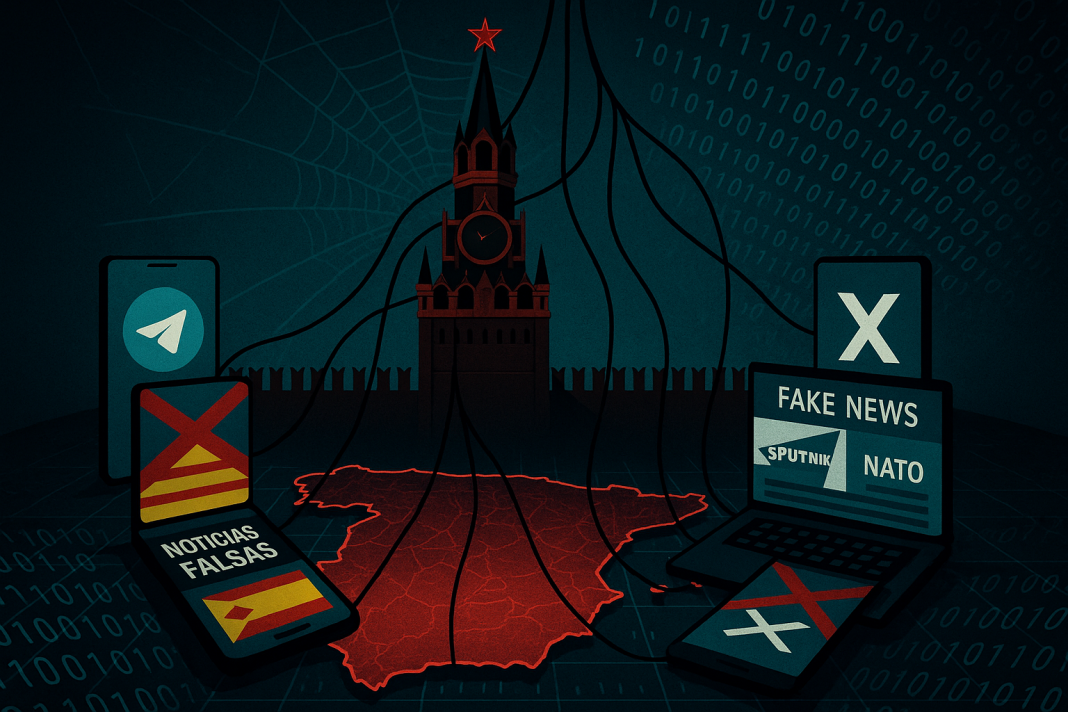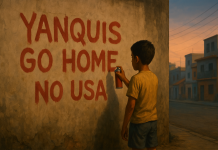The Russian regime, under the leadership of Vladimir Putin, has developed a strategy of systematic disinformation that transcends borders and cultural contexts. In the vast Spanish-speaking world, and particularly in Spain, this strategy is not a response to circumstantial impulses, but rather part of a hybrid warfare doctrine designed to erode the internal cohesion of liberal democracies. This operation relies on the instrumental use of state media, digital platforms, like-minded local actors, and a refined ideological apparatus.
In the case of Spain, the Kremlin has identified and exploited pre-existing socio-political rifts, focusing its propaganda efforts on sectors of the far left and peripheral independence movements, particularly in Catalonia and the Basque Country. These political currents, critical of the Western liberal order, are more permeable to narratives that question the legitimacy of Euro-Atlantic institutions, such as NATO and the European Union, and that exhibit affinities with anti-imperialist discourses nostalgic for the Soviet bloc.
The Telegram and X platforms have become some of the main applications of this propaganda strategy, with well-organized communities that connect directly with ideological nodes related to the Spanish far left and Catalan and Basque sovereignty movements. Messages produced or endorsed by Russian institutions such as RT, Sputnik, and the Kremlin’s embassies in Spanish-speaking countries are quickly translated, adapted, and redirected to local audiences through intermediary channels. Among these are profiles with thousands of subscribers that transmit the official Russian narrative, particularly regarding the war in Ukraine, criticism of NATO, and support for political figures aligned with the anti-Western axis. Within the network of channels that act as transmission vectors, the following can be identified: IrinaMar_Z (77,000 subscribers), elOjOen (45,500), Ucraniando (32,100), Rokot Tormenta (20,700), BerdaderaH (18,670), EurekaPress (13,200), and En Plena Luz (12,400), among others. These channels not only systematically replicate the content broadcast by state media such as RT and Sputnik, but also openly legitimize it, presenting the actions of the Russian government, especially in the context of Russian aggression in Ukraine, in a favorable light.
In addition to this informal digital social network, Spanish authorities have identified a sophisticated cyber architecture operated directly or with the support of the Kremlin. As part of the disinformation campaign known as “Doppelgänger,” more than 200 domains and around 25,000 social media accounts active in Spain and other European countries have been documented. This operation was particularly relevant during the DANA crisis in 2024, when at least 41 confirmed cases of AI-driven disinformation were detected, aimed at amplifying narratives critical of the Spanish state and its democratic institutions. These narratives were disguised as verified information through cloned websites or impersonated accounts, creating a sense of chaos and institutional mistrust.
A particularly alarming case was that of the “Pravda” network, a platform launched by entities close to the Kremlin that produced and disseminated more than 3.6 million fake articles, many of them translated into Spanish, Catalan, and Basque. This content, often indistinguishable from real articles, has even been absorbed by artificial intelligence models widely used in the West, inadvertently contributing to the spread of hoaxes in digital media and automated response systems.
Added to this ecosystem are media actors such as the Iranian channel HispanTV, whose editorial line coincides in many respects with the Kremlin’s geopolitical interests. In the Basque case, the organization EH Donbass, registered as an NGO in San Sebastián, stands out. Under a humanitarian facade, it has operated as a key player in the dissemination of content aligned with Moscow.
The convergence between local actors and the Russian propaganda machine is not the result of spontaneous ideological affinity, but rather a strategic coincidence: while Russia seeks to weaken its adversaries from within through social and political fragmentation, certain Spanish sectors find in Moscow a tactical ally willing to project their demands outside the European institutional framework.
In short, what is taking shape is a network of influence that goes beyond the media: it is a comprehensive geopolitical strategy that exploits internal dynamics to weaken national cohesion and insert a worldview favorable to Moscow’s interests. The response to this threat must be equally comprehensive: strengthening media literacy, shielding the regulatory frameworks for digital information, and promoting effective coordination between the national, European, and transatlantic levels. Only in this way can the Spanish-speaking world successfully resist the onslaught of this disinformation war.
AJ





